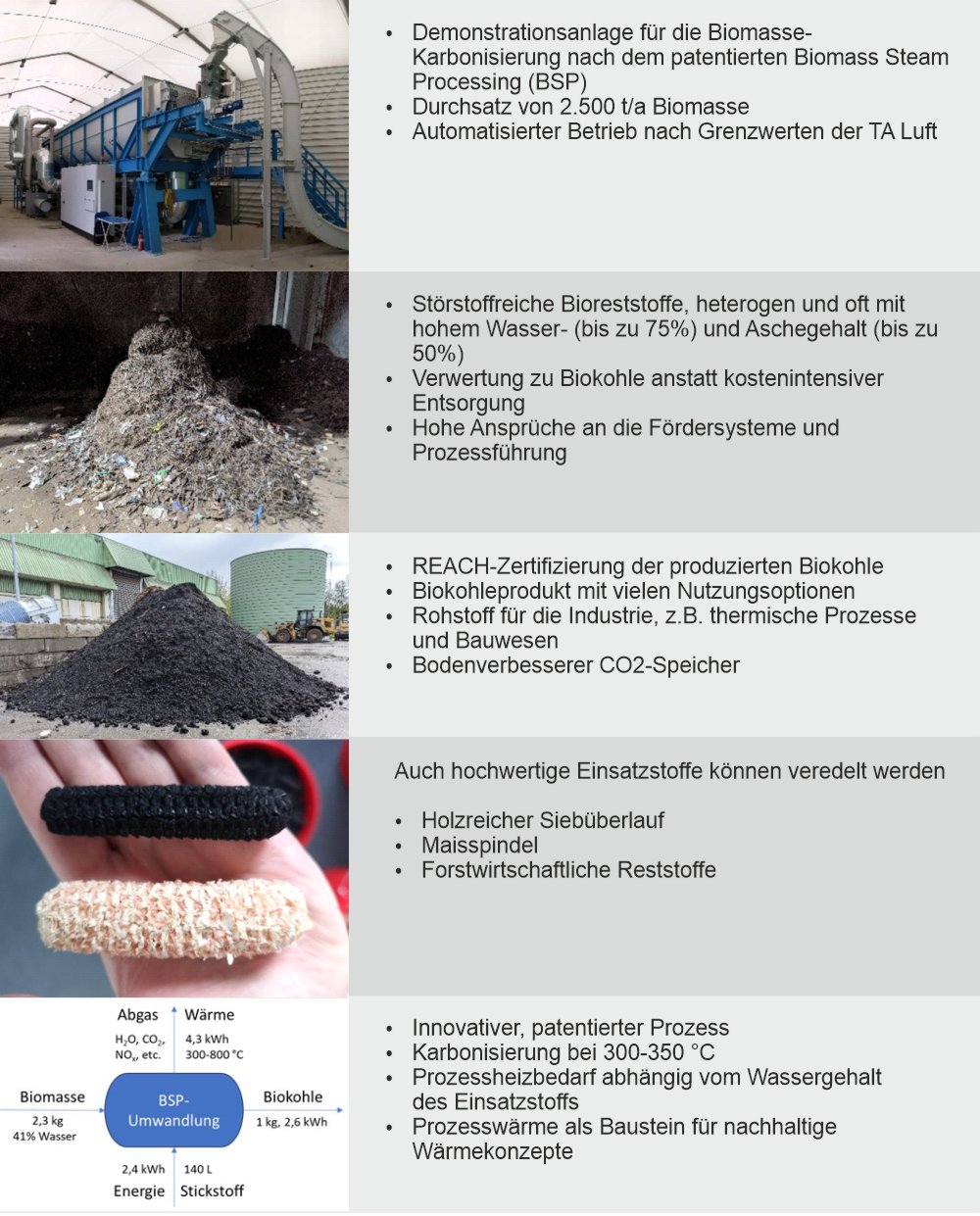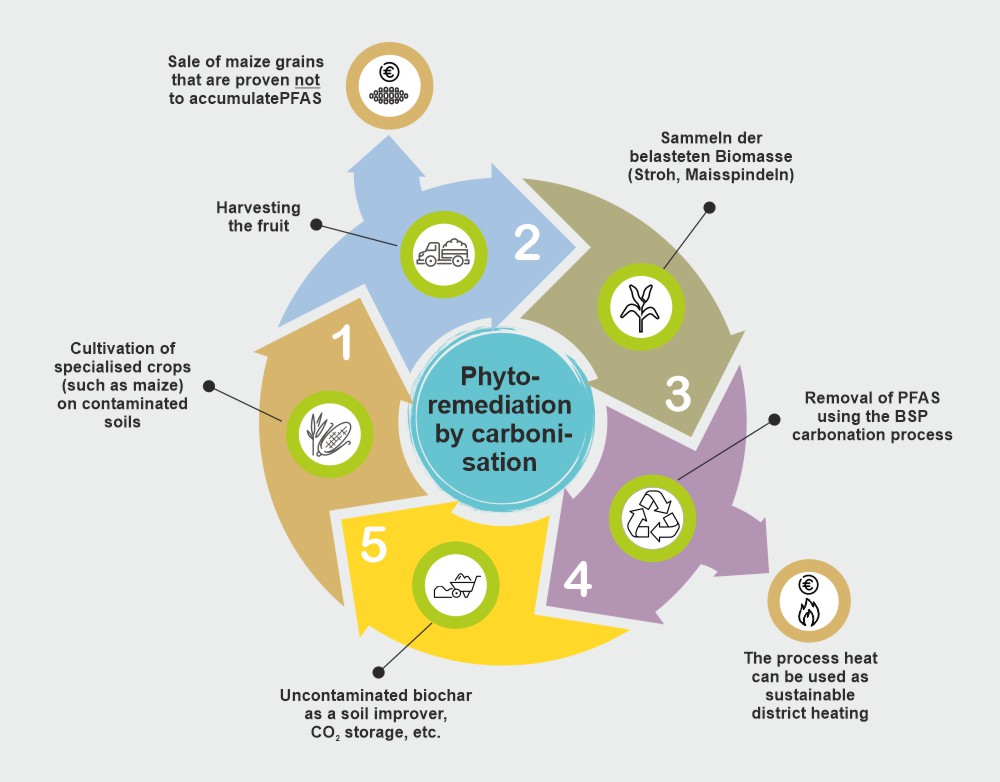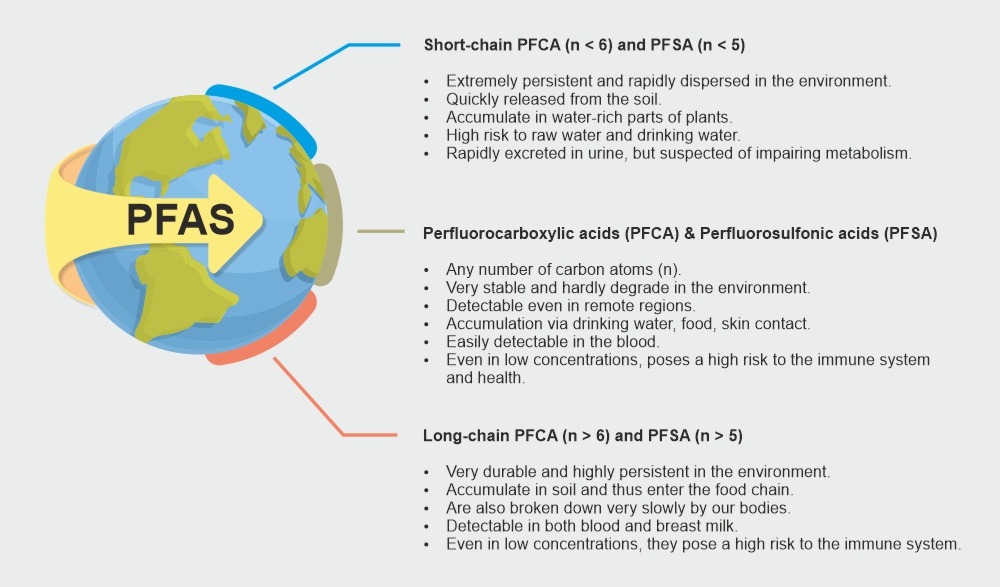Projects
Innovative Method for the Carbonisation of Plant Residues into Biochar

Biochar from organic waste using BSP technology


Climate-positive waste recycling strategy

Biochar is a versatile product
The BSP process (Biomass Steam Processing, biomass carbonisation) is an innovative and energy-efficient technology for the utilisation of moist and dry plant-based residual materials, such as organic household waste, agricultural residues and park and garden maintenance waste.
It was developed at the Karlsruhe Institute of Technology (KIT) with funding from Energie Baden-Württemberg AG (EnBW AG) and patented by EnBW AG.
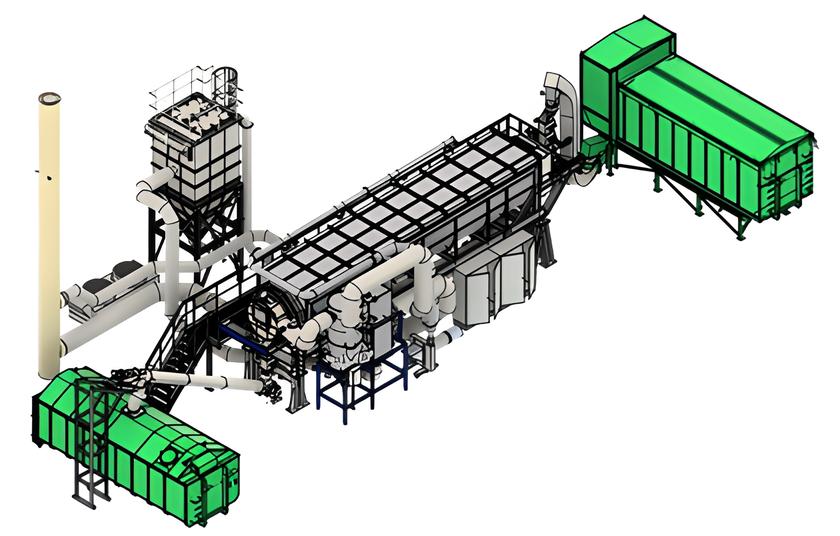
Durch den Einsatz der BSP-Technologie kann die kostenintensive Entsorgung von bisher nicht nutzbaren Abfallströmen vermieden und gleichzeitig ein wertvoller Rohstoff (Biokohle) erzeugt werden. Eine Drehrohranlage mit angeschlossener Abgaswärmenutzung wurde erfolgreich in Betrieb genommen.
By employing the BSP technology, the costly disposal of unusable waste streams can be avoided, while at the same time producing a valuable raw material (biochar). On behalf of EnBW Energie Baden-Württemberg AG, Live Energies GmbH built a demonstration plant for biomass carbonisation using the BSP process at the site of a composting facility. The plant has been successfully commissioned and consisted of a rotary kiln oven with integrated exhaust heat recovery. The plant achieved a throughput of approximately 2,500 t/a and processes various biogenic residue streams of the composting process.
Other major milestones included achieving compliance of the operation with the emissions-related requirements of the TA Luft (Technical Instructions on Air Quality Control in Germany) and the certification of the product “biochar from a waste stream” under REACH.
During the process, the biomass is thermally treated for around one hour at 300–350 °C in a steam-laden atmosphere. The target product is a carbon-enriched biochar, which can be used in various applications, e.g., as a bio-energy carrier, soil improver for degraded soils or CO₂ sink. Furthermore, it can also be used as a raw material for activated carbon production.
The plant has been adapted and optimised for residual material streams with a wide range of moisture and ash contents, thereby demonstrating an energy-efficient recycling process.
The heterogeneity of feedstocks with high levels of contaminants requires robust and reliable plant technology for automated operation. This can be achieved using the rotary kiln technology and suitable material transmission equipment.
Organic residual materials (wet and dry), originating from agriculture and forestry, municipal green maintenance, industry or households, can be processed.
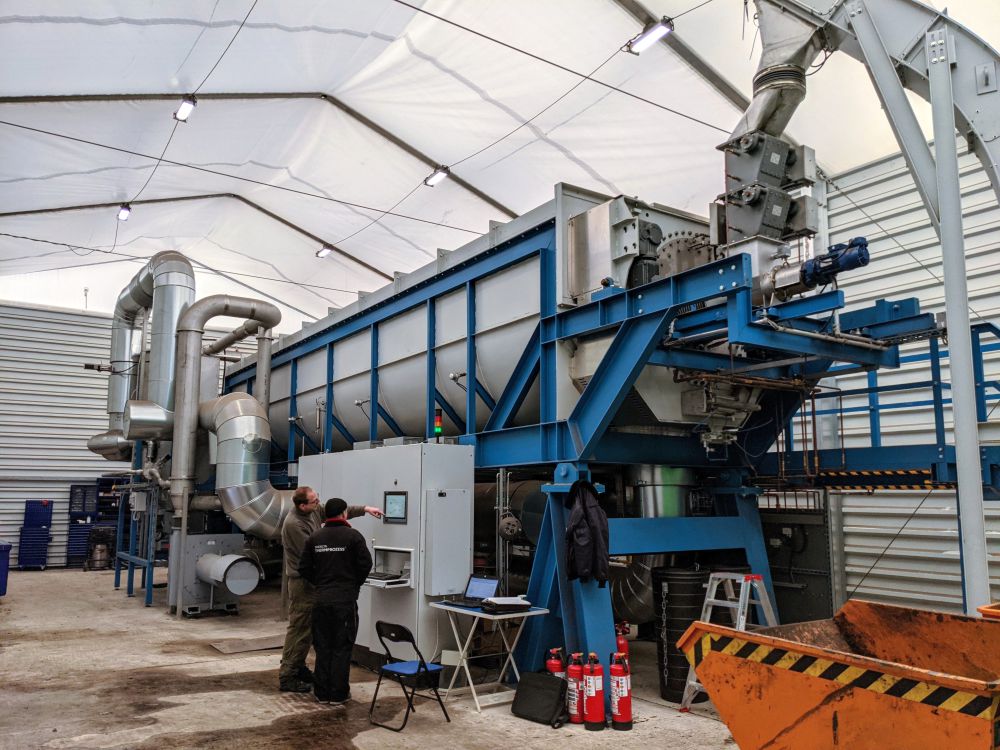
The advantages of BSP compared with slow pyrolysis and HTC
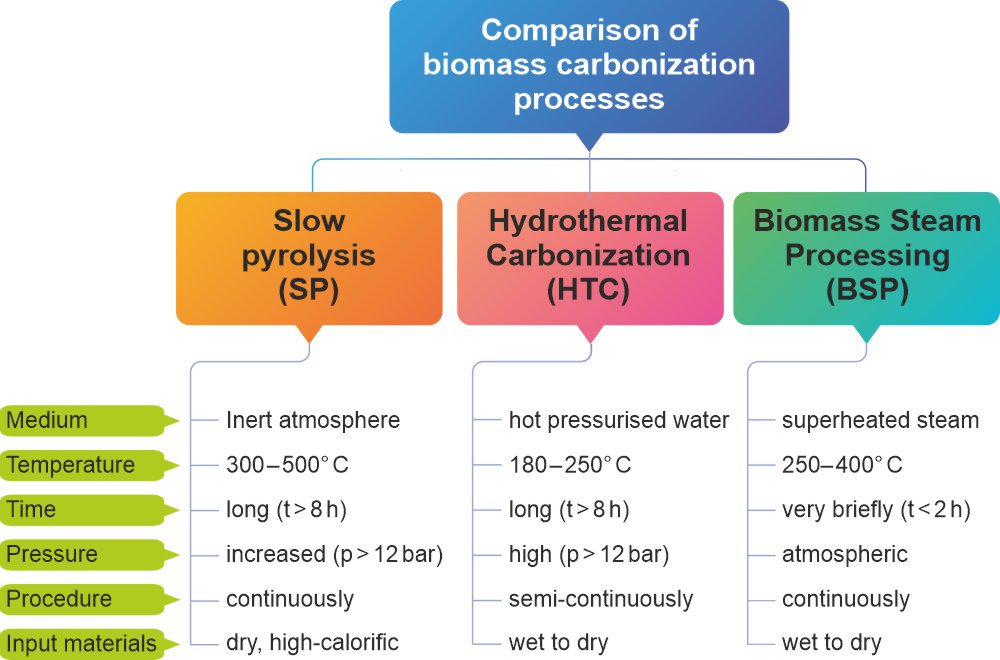

Low investment costs: Lower technical requirements, as neither high pressures nor high temperatures are used.

Significantly faster reaction time: Catalytic effect of the steam on the decomposition reaction of carbonisation at moderate process temperatures.

Advantages of atmospheric pressure: Reduced need for plant engineering effort in construction and operation, resulting in lower investment and operating costs.

Benefits of continuous operation: Lower operating costs and reduced mechanical stress on plant equipment by avoiding heat-up cycles.

Wide range of feedstocks: Use of robust plant components and optimised process control with integrated heat recovery.
After commissioning the BSP plant, Live Energies tested various raw materials between 2020 and 2023 to optimise the process for a wide variety of materials and investigate the associated process complexity.
For this research work, the company was certified as a “Research Company” by the German Federal Research Allowance Certification Office.

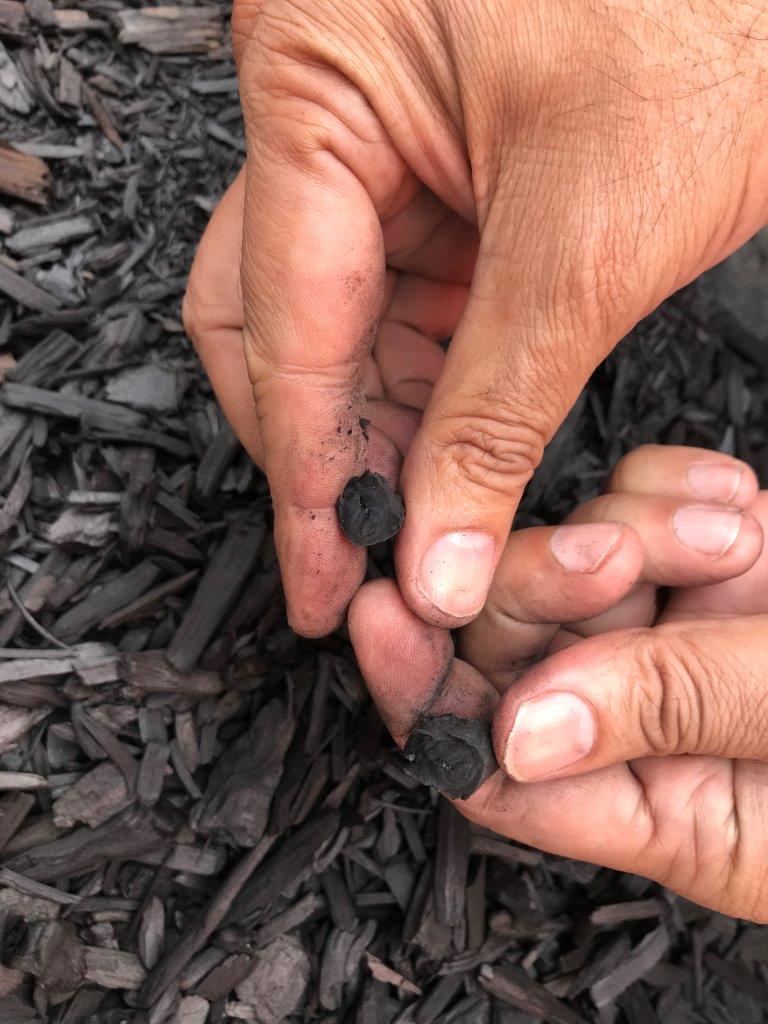
The end product is a carbon-enriched biochar that can be used in both agricultural and technical sectors.
Overview of applications of biochar or derived products:
Compost additive: biochar provides suitable surface area for colonisation by microorganisms thus increasing their population and serves as a storage medium for nutrients and water. This accelerates the decomposition process and improves compost quality.
Animal husbandry: as a feed additive, it can support digestion and, used as substrate, reduce odour emissions.
Energy production: as a sustainable fuel for energy generation, it reduces CO₂ emissions. When used in a biogas plant, biochar can increase gas yield by 10–20 % due to its high carbon content and positive effect on microorganisms (Rödger, Jan-Markus, et al. 2013).
Filter for pollutant removal: potential applications include cleaning of wastewater and exhaust streams from municipal and industrial sources.
Construction material: biochar is suitable as an additive for eco-friendly concrete, asphalt and other building materials, where it improves their CO₂ footprint.
Textile industry: incorporated into textiles, biochar provides thermal insulation properties and reduces odour emission.
Medical applications: specially processed as medical-grade charcoal, it can be used to treat diarrhoea and food-poisoning.
Summary
- The BSP (Biomass Steam Processing) is an energy-efficient technology for the carbonisation of moist and dry biomass, developed at KIT and patented by EnBW AG.
- It uses the inherent moisture of the biomass to create a superheated steam atmosphere at relatively moderate temperatures and atmospheric pressure. This enables a continuous, cost-effective operation without complex technology. The process produces biochar, which is versatile in use – for soil improvement, composting, energy generation, pollutant filtration, and in the construction and textile industries.
- Live Energies GmbH demonstrated the innovative technology in a plant with a throughput of 2,500 t/a on the site of a composting facility and successfully commissioned it.
Projektbeschreibung in Tabellenform
Publications
Jatropha – Potential of biomass steam processing to convert crop residues to bio-coal and thus triple the marketable energy output per unit plantation area. https://www.sciencedirect.com/science/article/abs/pii/S0926669019303152

Activated carbon from organic residues
Activated carbon has many applications in industry, medicine and daily personal use.
These include:
- catalytically assisted reactions in the chemical industry
- use as a filter material for purifying gases and liquids
- application in cosmetics and foodstuffs
Activated carbon (AC) is mostly produced from fossil feedstocks such as coal and lignite, but also from nutshells (e.g. walnut or coconut). Production is carried out either by chemical activation, in which chemicals are used to increase the surface area, or by thermal activation, in which the feedstock is treated at 600–1000 °C in an atmosphere of carbon dioxide or steam.
Used AC can generally be reactivated and reused, albeit with partial loss of adsorption capacity.
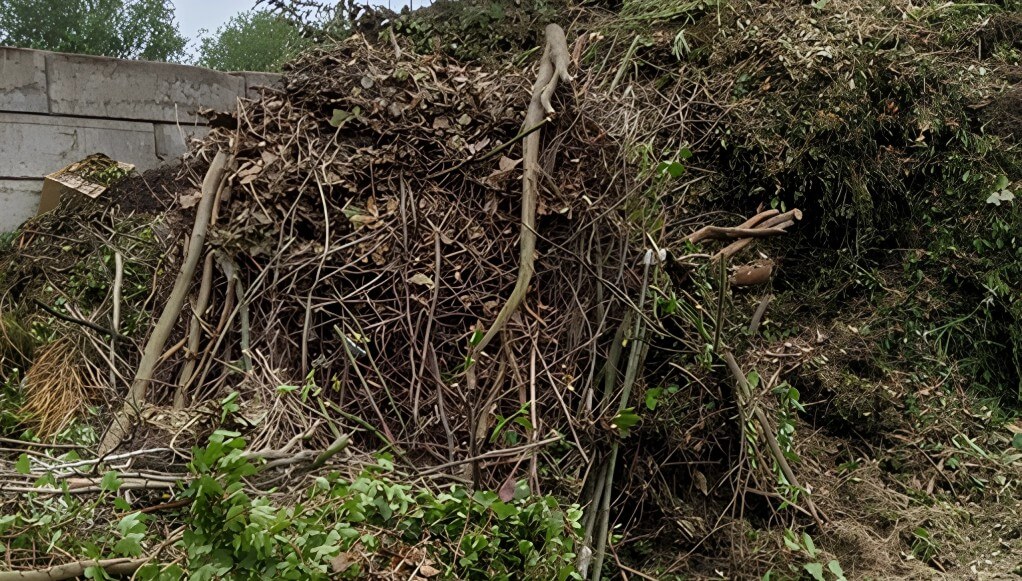
Organic residues (wet and dry) generated in agriculture and forestry activities, municipal land maintenance, industry or households, can be processed.
Both global and regional demand for sustainably produced activated carbon is increasing significantly due to its many potential applications.
Live Energies GmbH operates an experimental plant (mini rotary kiln) to evaluate the activation process of various bio-based feedstocks. In collaboration with EnBW AG and the Karlsruhe Institute of Technology (KIT), experiments were conducted to gain a comprehensive understanding of the process parameters of activation. The aim is to achieve
For different materials, such as walnut shells, garden waste and household organic waste, the conditions under which high-quality activated carbon can be produced have been identified. For example, bio-based activated carbon from garden waste achieved BET surface areas of more than 1,000 m²/g, qualifying it for a broad range of commercial applications.
Moreover, research has shown that the combination of the BSP and activation is highly advantageous. Through a preliminary carbonisation step, waste biomass can be stabilised and homogenised as a potential feedstock for activation.
Without this process step, particularly wet and lignin-poor biomass would not be suitable for activation.
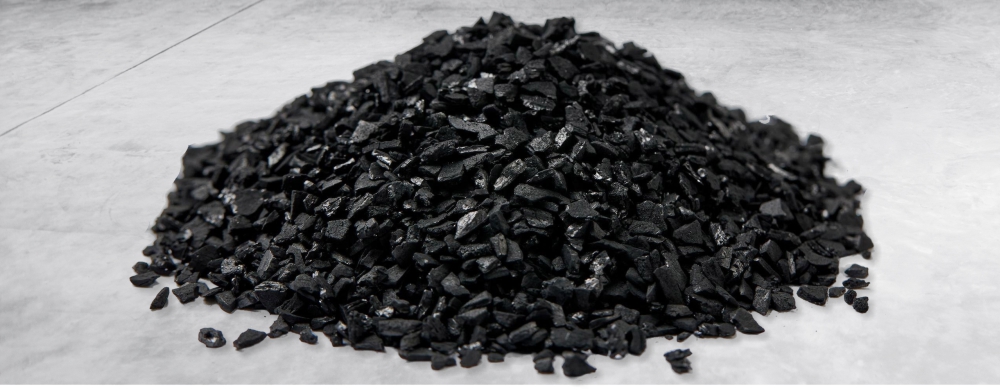
The research contributes to the development of a modular activation unit for BSP carbonisation plants, in order to expand the range of applications of the BSP technology.

Removing the global pollutant PFAS while generating bio-char and energy

Decontamination of soil and reduction of long-term harmful effects

Long-term strategy for the remediation of contaminated soil

Biochar from contaminated plant material
Live Energies is currently conducting a study, funded by the BMWE via ZIM, on the decontamination of PFAS in soil.
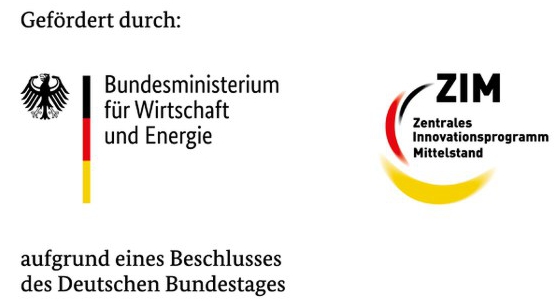
The contamination of (arable) soils with Per- and polyfluoroalkyl substances (PFAS) continues to pose a major challenge to the use of farmland and the purity of groundwater.
The approach pursued by Live Energies GmbH for long-term decontamination is to cultivate the affected soils with suitable plants and then carbonise the resultant contaminated biomass. In doing so, the problematic compounds can be broken down, while producing bio-char and process heat from a regenerative source at the same time.
Live Energies GmbH has gained experience in the thermal decomposition of PFAS-contaminated biomass through carbonisation in completed projects, and is now working on implementing the technology. To this end, we collaborate with reputable research institutes as well as with affected communities and associations in Germany, in order to gather the best possible know-how and experience in implementation.
Graphical summary of the project example using maize
What are PFAS (per- and polyfluorinated alkyl substances)
Summary
- PFAS-contaminated soils and groundwater lead to high costs.
- Live Energies employs a strategy of phytoremediation by cultivating with suitable plants, followed by carbonisation of the contaminated biomass.
- The resulting bio-char and process heat are also used as elements of a climate-neutral heat supply.
- As part of a ZIM feasibility study, the thermal breakdown of the pollutants is being further scientifically investigated in order to continuously optimise the process.

Recovery of concentrated nutrients from slurry with bio-char
Intensive livestock farming causes environmental problems, e.g., due to the nutrient-rich cattle manure.
At present, livestock manure is either applied directly to the soil or used as biogas digestate, which leads to excessive nutrient accumulation in soil and groundwater. The slurry generally has a high water content of over 90%. Even after biogas production, the slurry still contains a high proportion of water and remains rich in various nutrients. However, the large volume combined with a relatively lower concentration of mineral nutrients restricts the transportability of this potential fertiliser, resulting in its application mainly in the immediate vicinity of the farms themselves.
A transportable, concentrated mineral fertiliser derived from slurry can prevent such regional over-fertilisation and make organic fertiliser available for other areas as well.

Fig.: various organic fertilisers from slurry
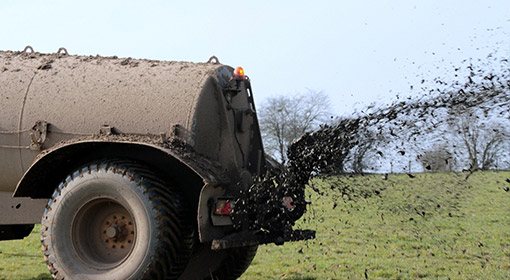
Live Energies GmbH, in cooperation with the State Institute of Agricultural Engineering and Bioenergy at the University of Hohenheim, Stuttgart, Germany, is developing processes to remove surplus nutrients from slurry and concentrate them into transportable organic fertiliser.
Projekte
Karbonisierung
Jatropha ↵
Biogas ↵




